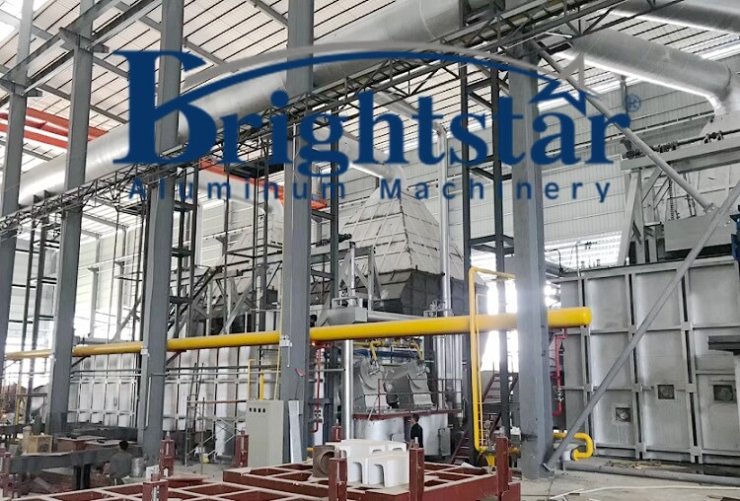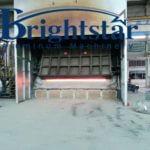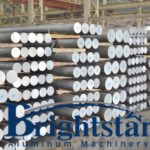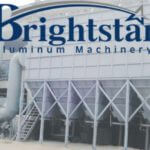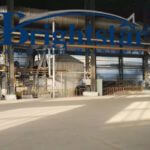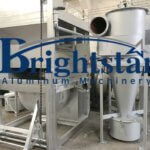Heavy oil regenerative combustion system general information
Heavy oil regenerative combustion system general information
Heavy oil regenerative combustion system
Something about heavy oil regenerative combustion system
The regenerative combustion system of aluminum industry consists of a regenerative inflamer (including regenerative burner, fuel burner, and regenerator ), air reversing valve, fuel reversing valve, gas supply pipeline, pressure stabilizing valve, combustion-supporting air pipeline and blower, fume exhaust ductwork and induced fan, air compressed pipeline, air compressor, regenerative combustion automatic control system and other types of equipment.
Regenerative burner
The function of the regenerative burner which is made up of a burner nozzle, regenerator, metal shell and refractory, is mainly used to provide a safe channel of combustion, and recycle the high temperature used the heat of gas, then heat the combustion-supporting air.
The regenerator is the storage room of the heat exchanger, which can be made as round or square.
The high alumina ceramic regenerative ball will be internally installed as the regenerative material, which is of high regenerative efficiency.
Under the normal working conditions, the ceramic ball regenerator needs to clean and change them every 2~3 months.
It will take about one hour for changing the ceramic ball, and the replaced dirty ceramic ball can be reused after cleaning.
Fuel burner
The fuel burner, including the igniter burner and the main fuel burner, which is consist of a mixer, fuel pipe, cooling pipe, burner tip and other components, is mainly used to provide a burning channel of the fuel.
It is also equipped with an automatic ignite and fire monitor system to keep the fuel burner running safely.
In order to keep the fuel burner from damaging because it is in a high temperature for a long time, the fuel burner should access the cool air to protect it.
The igniter burner is used to ignite the fuel burner, so to solve the problem of inverting flameout of the main fuel burner.
The main function of the fuel burner that assorted the regenerative burner is to provide a good atomization fuel-burning channel and equipped with ignite and safety inspection devices to ensure the fuel burner running safely.
It consists of an ignition burner, main fuel burner, fire rod (ignition pin, firing head, sensor bar, flame detector bar, ignition electrode, and spark plug), flame detector and other components.
The main fuel burner has a fuel gas burner and fuel oil burner, but with many specifications.
In order to keep the fuel burner from damaging because it is in a high temperature for a long time, we had better to access the cool air around the fuel burner to protect it.
1. Air reversing valve
Air/fume reversing valve is made up of wafer type butterfly valve, pneumatic operator, reversing solenoid valve, muffler etc. components, whose main function is to control the flow direction of the regenerative burner.
When the regenerative burner is under the position of heat-releasing, opening the air channel and closing the fume channel, then the heat retainer can heat the combustion air.
When the regenerative burner is under the position of heat accumulation, closing the air channel and opening the fume channel, so then the heat retainer can recycle the used heat of the fume.
Air/fume reversing valve is a switch-type pneumatic valve, the driver media is the compressor air.
It can automatically reverse at a certain time and constant temperature, which is controlled by the regenerative burning automatic control system.
2. Fuel reversing valve
The fuel reversing valve is used to coordinate the air/fume reversing valve, to open or close the fuel channel quickly, whose action of implement should be synchronized with the air/fume reversing valve, and can follow the steering instruction of the regenerative burning automatic control system.
The fuel reversing valve can be a switch-type solenoid valve or be pneumatic angle seat valve, whose normal operating life is more than one million times.
3. Combustion-supporting air pipeline and blower
The function of a combustion-supporting air pipeline and blower is mainly to send certain wind speed and wind volume combustion-supporting air into the regenerative burner.
The combustion-supporting air pipeline is welded by the Q235 steel plate; the pipe fitting includes various types of connectors, temperature transmitters, the damper baffle and manual control valve ETC.
The blower has long life structure, separating the cooling air blower from the combustion-supporting air blower to ensure that can keep the low power cooling blower running while high power combustion-supporting blower stop working as it is shutdown, which can continuous cool and protect the burner.
4. Fume exhaust ductwork and induced fan
The main function of the fume ductwork and the induced fan is to discharge the fume in time.
The fume ductwork is welded by the Q235 steel plate, The pipe fittings include various type of connectors, temperature transmitter, damper baffle, manual regulating valve etc..
The induced draft fan is a water cooling structure, heat resists 250℃, is of excellent quality, and more than10, 000 hours of trouble-free operation.
5. Air compressed pipelines and air compressor
The function of the air compressed pipes and air compressor is to provide the operating drive source for the automatic control air/fume reversing valve.
The air compressed pipe is galvanized steel pipe, The pipe fittings include various type of connectors, stainless steel metal hose, air 3 set units, cut-off control solenoid valve, manual adjusting ball valve, manometer, low-pressure protection switch etc..
The air compressor and the air cylinder should be provided by the buyer and the pipe will be connected to the places that need the gas.
6. Heavy oil supplying pipelines
The function of the heavy oil supplying pipelines is to supply the fuel support for the regenerative combustion system.
The pipelines are zincification steel tubes. The pipe fittings main include all kinds of connectors, breaking control solenoid valves, manual regulating ball valve, relief valve, quick connect stainless steel tube, manometer and so on.
The buyer should provide the heavy oil tank and the pipelines; the pipelines should connect to the place that the supplier designated.
The buyer should also supply the stokehole temper oil tank and oil pump assembly system.
7. Regenerative automatic control system
The regenerative automatic control system can set the thermal parameters of the furnace flexibly through the touch screen.
The advanced industry control computer PLC can automatically check the fire, flameout protection, low-pressure safe cut-off, and can control the ignite program, pulse-combustion, reversing, temperature, fluid pressure and other control programs.
Once there is safety exception, the operating software will start the alarm signal immediately, forcing the operating staff to deal with it.
The graphic interface of the control system is very fruitful and obvious, which includes the real-time furnace monitor interface, manual/automatic control operating interface, process parameter setting interface, alarm parameter setting interface, history temperature inquiry interface, and alarm information summary interface and so on.
The operating system can provide automatic, semi-automatic, manual and no-load four kinds of control operating modes, so as to meet the different needs of working conditions, processing adjustment and equipment maintenance.
8. Automatic igniting system
The automatic igniting system is made up of the ignition program controller, ignition transformer, high-voltage cable, fire rod, fuel ignition burner, which can automatically ignite the fuel burner.
As the system checks that it is allowed to ignite, the PLC will start the ignition program controller, then it will supply the power to the ignition transformer which will produce high pressure in split second, the fire rod interelectrode will form the voltaic arc to fire the fuel ignition burner, then striking the main fuel burner, which makes the ignition progress automatically in reality and say good bye to the history of manual ignition.
When the regenerative burner runs in divert, the ignition burner will keep burning, so as to ensure the regenerative burner ignite frequently.
9. Flame monitoring system
The flame monitoring system is mainly used to monitor the conditions of the flame, detect whether there is flame or not, and will output the switch signal to the PLC control box, which is made up of flame sensor, flame detector and flame relay.
The flame sensor generally adopts UV photoelectric cell, if there is flame, the UV tube will produce a flame current and will feedback to the flame detector to judge whether there is flame or not.
If the ignition burn failure to ignite or the main fuel burner flame-out in halfway, that is to say, the flame sensor did not detect the flame signal, then the PLC control box will send out instructions that automatically close the safe solenoid valve to flame out protection immediately.
At the same time, it will send out the acousto-optic alarm signal to remind the operating people.
The flame monitoring system will monitor the flame constantly during the progress of burning to ensure its safety of burning.
10. Temperature control
Temperature control is the core of the entire system, which includes three parts: measuring the fume temperature of the fume ductwork to control the action of reversing.
Measuring the temperature of the aluminum liquid to control the quality of heating; measuring the temperature of the furnace chamber to control the progress of burning.
It adopts the pulse-combustion control technology to control the combust progress in real-time, which can automatically switch the big/small fire and adjust the heat load of the furnace chamber in real-time, to automatically control the furnace’s temperature, which can greatly save energy.
11. Pressure control
The furnace chamber pressure control is fully automatic control, which is divided into two-stage control.
The entire pressure control system includes the pressure transmitter, control operation unit, and execution unit.
here is a differential pressure transducer on the top of the furnace, whose pressure output signal is 4-20MA, then send it to the PLC, after date exchanging, then the current furnace pressure can display on the HMI.
To solve the furnace pressure fluctuating problem caused by switching the regenerative burner and to control the pressure effectively, the furnace is equipped with a set of fume exhaust tubes whose inner lining is made of insulation materials and fume exhausting adjusting control valve.
The fume exhaust valve plate adopts a heat-resistant steel-inserted structure, which is made of castables and air tubes, driven by an air cylinder.
When the main control loop of the furnace pressure can not control the pressure effectively, according to our rich experience of using and designing, a dedicated program algorithm, in a certain period, we can open the fume switch valve of the auxiliary fume pipe, which can balance and control the furnace pressure.
When the exhaust fume of this pipe is about 15% of the total combustion exhausting fume, its main function is to balance the pressure.
In addition, the ends of the air and fume pipes of the stokehole are equipped with a shield protective cover, to prevent the air and gas pressure too high, the purpose is for pressure relief.
Brightstar Aluminum Machinery offers aluminum scraps recycling machine,aluminium scraps melting regenerative burner, aluminium dross processing machine and aluminum chips melting system and casting machine.
Contact us now for your aluminum project, turnkey project and package deal. One-stop solution!
Get A No-obligation Quote
